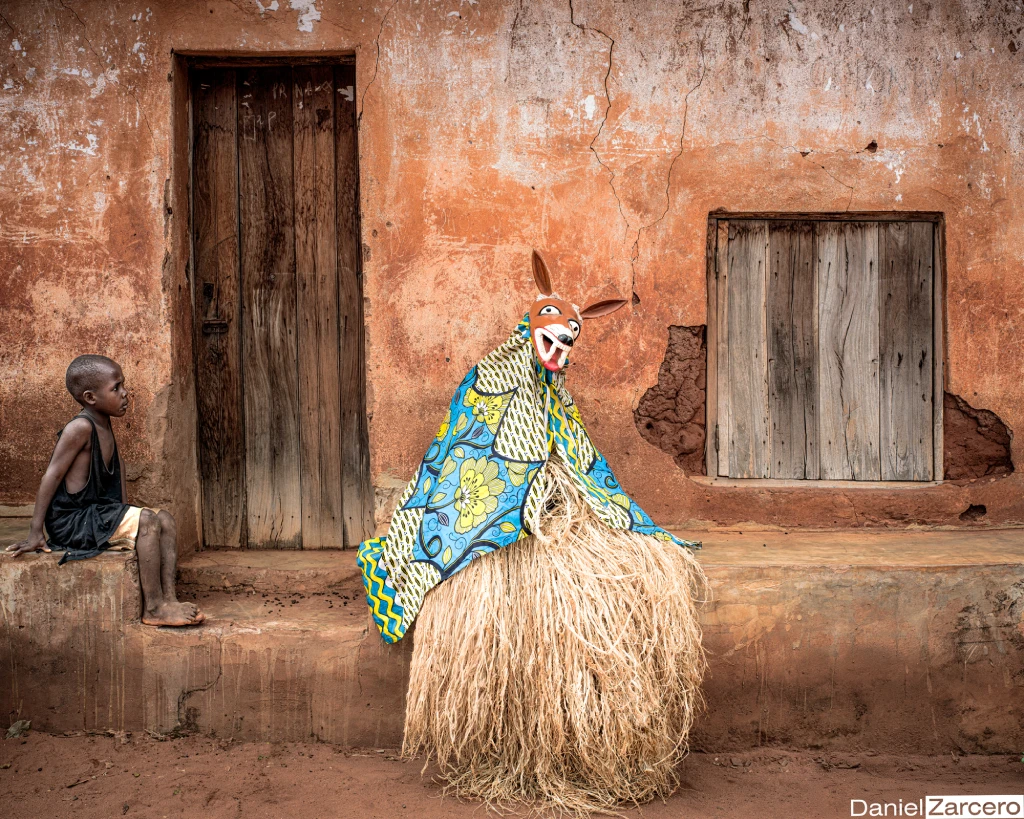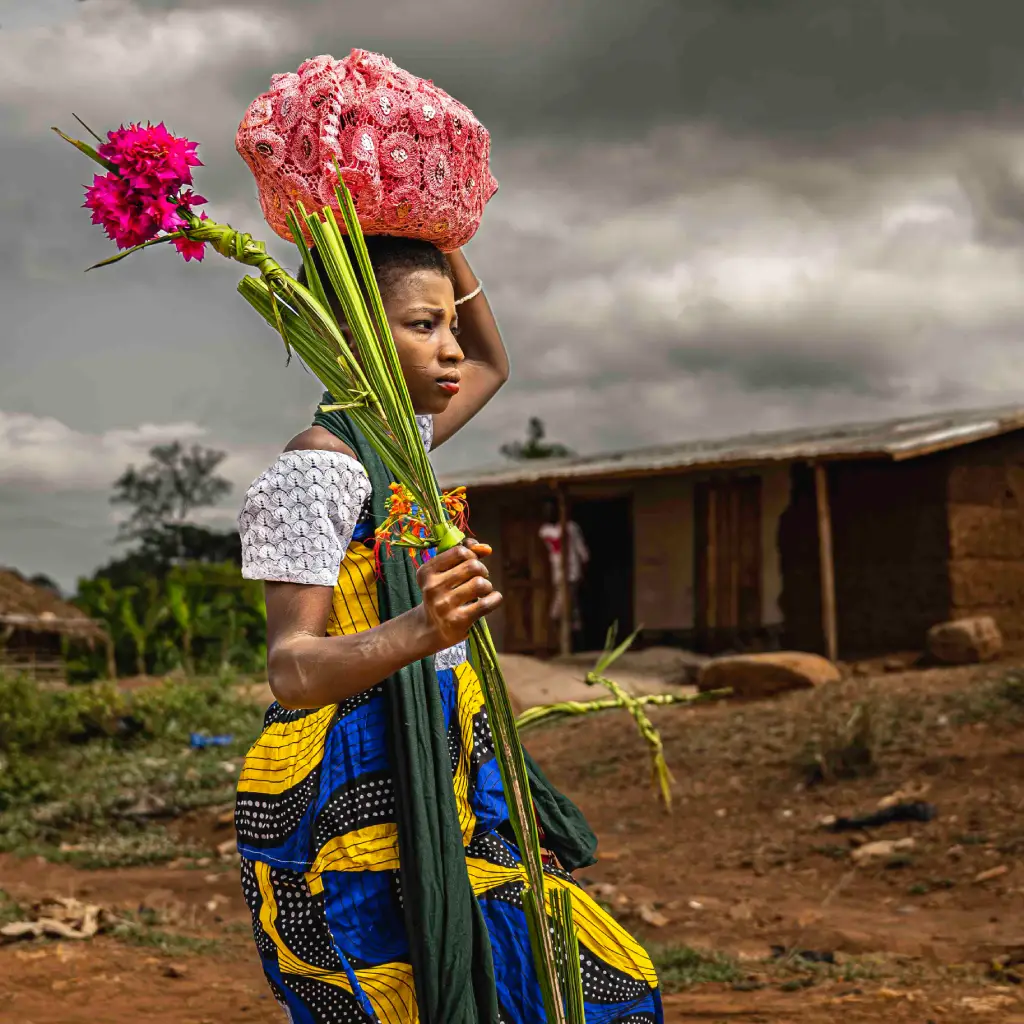Day 1: International Flight and Arrival
Departure on an international flight to Cotonou. Upon arrival, transfer to the hotel where you can rest and prepare for this adventure.
Day 2: Cotonou – Ganvié – Cotonou
We will begin the first day by visiting the economic capital of Benin, Cotonou — a port city marked by remnants of the communist era that have shaped its appearance.
To begin immersing ourselves in the essence of the city, we will explore the Dantokpa Market, one of the largest in the Gulf of Guinea, where we will experience first-hand the colours, aromas and flavours of West Africa. In this market, we will witness the wide diversity of people, their vibrant clothing and eye-catching hairstyles. We will visit food stalls as well as those selling fetishes, offering an introduction to the fascinating world of voodoo.
Next, we will head to Calavi, a lakeside port from where we’ll board a pirogue to cross Lake Nokoué and reach Ganvié, one of Benin’s true gems. This large stilt village is inhabited by the Tofin people, who took refuge in the lake in the 18th century to escape slavery. It is captivating to witness how everyday life unfolds in this aquatic setting.
In the afternoon, we will return to Cotonou with the feeling of having lived a truly unique experience.
Day 3: Porto-Novo – Holi Ethnic Group
We will travel to the political capital of Benin, Porto-Novo. As we walk through its streets, you will discover a city full of history at every turn, where each corner invites you to delve into its past.
The city stands out for its diverse architecture, including churches, mosques, voodoo temples, French colonial houses, and an outstanding example of “Afro-Brazilian” style. This architectural style emerged from the descendants of slave traders who returned to Benin from Brazil, adapting Brazilian mansions using local materials.
After our stroll, we will head to the territory of the Holi, an animist ethnic group known for their facial scarifications — symbols of beauty and tribal belonging — as well as for their body tattoos, especially among elderly women, who bear them on their stomachs. We will explore their agricultural and foraging lifestyle, and with the help of the local chief, we will interact with the villagers and even accompany them in their daily tasks. For photography lovers, the Holi are an authentic visual treasure.
At the end of this experience, we will continue to the kingdom of Cové, where we will spend the night.
Day 4: Cové – Fulani Ethnic Group – Dassa
We will begin the day hoping to be received by the king of Cové, a figure of great importance in Benin. Although the country is a democracy, kings play a crucial role in maintaining social cohesion and preserving traditions.
Next, we will head towards the Agonlin hills to learn about the Fulani, also known as Peul or Borgu, the largest nomadic ethnic group in Africa. We will walk through the forest to reach one of their villages, where we will observe their lifestyle. It is unlikely we will see the men, who will be out herding cattle, but we will meet the women, who take care of the children and the home. Their homes, made of cane and raffia, are circular in structure — characteristic of nomads, as they are easily dismantled and transported.
In the afternoon, we will continue to Dassa, where we will climb the sacred mountain, renowned for its voodoo temples and impressive views over the surrounding plains.
Day 5: Dassa – Taneka Country
We will begin the day heading north towards the territory of the Taneka tribe. Upon arrival, we will gather in the spiritual centre of the village and visit the royal palace, where we will witness their completely ancestral way of life.
The village priests, dressed in loincloths and smoking pipes, will give us a unique glimpse into their way of life. Throughout the visit, we will observe how traditions and spirituality remain deeply rooted in the past, preserving a truly authentic and singular lifestyle.
Days 6 and 7: Somba Ethnic Group
We will conclude our visits in the area and continue our journey towards the Atakora Mountains, the highest point in Benin, where the landscape changes dramatically into mountains and small valleys inhabited by various animist ethnic groups — most notably the Somba, known as adobe craftsmen.
Their famous two-storey houses, called tata, are a unique example of African architecture and deserve to be visited unhurriedly. Getting to know this people offers immense anthropological value. Alongside the Taneka, the Somba are one of the most representative ethnic groups in northern Benin, with traditions and architecture that preserve fascinating authenticity.
Day 8: Boukombé – Abomey
We will make our final visits in one of the most beautiful valleys in Africa, where the Ditamari or Somba culture has managed to preserve its essence. Despite the changes brought by globalisation, they remain a truly special and unique community.
After bidding them farewell, we will embark on a long journey south, arriving in the afternoon at Benin’s historic capital — the former Danxome — famous for its royal palace and museums in Abomey.
Day 9: Abomey – Lake Ahemé
In the morning, we will visit the Royal Palaces of Dahomey, whose rooms function as a museum and are listed as a UNESCO World Heritage Site. After the visit, we will travel to the Lake Ahemé area, a sacred place for the Mina and Pedah peoples of southwestern Benin.
We will visit the animist neighbourhood, where the Temple of Shango is located — also known as the “Temple of Skulls”. Rituals and dances are held here to invoke the ancestors and give thanks for the harvest, the fishing, or for the absence of major troubles in the community.
Day 10: Ouidah – Cotonou – Return
This final stage of the journey immerses us in Benin’s slave-trading past. We will begin with a walk through the colonial district, where we will again encounter Afro-Brazilian style buildings.
We will then walk the four kilometres of the “Slave Route”, from the auction square to the “Point of No Return” — a symbolic place commemorating the departure of more than two million slaves to the Caribbean, Brazil, and the southern United States.
Along the route, we will visit various stages where the slaves stopped before setting sail, including the “Black Box” (a building where prisoners were confined in darkness) and the mass graves. This journey takes us to a site full of symbolism, marking the end of a trip that closes a profound historical chapter.
We will return to Cotonou to rest before heading to the airport at the scheduled time.



